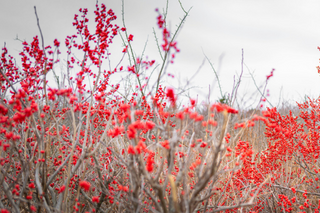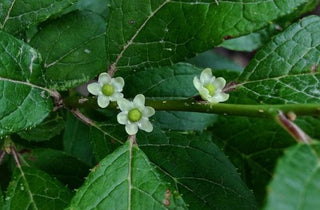Winterberry Holly - Ilex verticillata
- Unit price
- /per
Phonetic: EYE-lecks vur-tiss-ih-LAY-tuh
Shrubs larger than 1 gallon can not be shipped.
Most shrubs will not be ready before the first week of June when they are fully leafed out.
1 Gallon Pot
2 Gallon Pot - 15-18” Shrub
3 Gallon Pot - 3' Shrub All Males
Winterberry Holly is grown in average, acidic, medium to wet soils in full sun to part shade. Good tolerance for poorly drained soils including wet boggy or swampy conditions. The plant is dioecious, needing both male and female plants to produce the attractive berries. Only fertilized female flowers will produce the attractive red berries that are the signature of the species. Generally, one male winterberry will be sufficient for pollinating 6-10 female plants. Flowers appear on new growth. Flowers, if properly pollinated, give way to a crop of bright red berries that are quite showy and will persist throughout the winter. It's fruits are eaten by over 48 species of birds, including cedar waxwings, and small mammals.
- Hardiness Zone: 3-9
- Native Northeast Region: BONAP Map
- BONAP Map Key Color Guide: Map Color Key
- Sun Exposure: Full sun to partial shade
- Flower Color: White
- Bloom Time: June, July
- Soil Type: Medium to Wet
- Mature Plant Size: 6-12' Height, 6-12' Width
- Plant Spacing: 8'
- Host Plant: Henry's Elfin
- Attracts: Butterflys, Bees, Birds, Small Mammals
- Advantages: Naturalize, wetlands, wildlife food source
- Landscape Uses: Winter interest, Specimen
- Companion Plants: Red-osier Dogwood and Buttonbush
- Deer Resistant
Adding product to your cart


